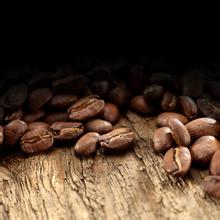Introduction to the taste of variety treatment method in Dominica coffee bean grinding scale production area
Pepe farm
PEPE
Grow coffee on the premise of protecting the environment
After peeling the empty shell of coffee, compost is used to return it to the soil, and the drainage during purification is also purified. All production processes are carried out on the premise of maintaining the natural environment.
Location: Harrawakoa area
Average altitude: 1000-1500m
Cultivated varieties: Kaddura et al.
Refining method: washing type
Coffee characteristics
The coffee beans, which are carefully refined by washing, have a soft aroma like floral aroma. Among the many coffee producing countries in the Caribbean, the coffee beans produced in Dominica have the most representative coffee aroma.
Variety Kind
Kaddura species are increasing day by day
Hit hard by the hurricane in 1998, countless losses were lost everywhere, so the local area generally began to plant Kaddura species with lower tree height and higher harvest. Although Baraona still has Tibica coffee, its harvest has been greatly reduced because of the annual hurricane damage.
Planting Cultivation
The climatic conditions are no different from those of the highlands.
The climatic conditions in Dominica are similar to those in the higher elevations of Central America. The low altitude areas began to harvest in September, while the highland areas with elevations of 600-1500m began to harvest in February-April of the following year. Most of them are refined by washing.

Important Notice :
前街咖啡 FrontStreet Coffee has moved to new addredd:
FrontStreet Coffee Address: 315,Donghua East Road,GuangZhou
Tel:020 38364473
- Prev

Flavor description of high-quality coffee beans in Ecuador introduction to the production area of grinding scale
Ecuador is one of the few countries in South America that produces both Arabica coffee and Robbins coffee. However, as the land suitable for Arabica coffee trees is decreasing, the production of Robbins coffee is gradually increasing. The best Arabica coffee comes from the Andes, especially the Chanchagu Valley (ChanchamgoValley), which is divided into two mountains from the south.
- Next

Costa Rican coffee beans taste description grinding calibration origin treatment method introduction
Costa Rican coffee is full of particles, with ideal acidity and unique aroma. Costa Rica's coffee industry, formerly controlled by the Instituto del Café de Costa Rica (ICAFE), has been taken over by the Official Coffee Council (Oficina del Caf). Among coffee exports, those deemed substandard are colored blue.
Related
- Detailed explanation of Jadeite planting Land in Panamanian Jadeite Manor introduction to the grading system of Jadeite competitive bidding, Red bid, Green bid and Rose Summer
- Story of Coffee planting in Brenka region of Costa Rica Stonehenge Manor anaerobic heavy honey treatment of flavor mouth
- What's on the barrel of Blue Mountain Coffee beans?
- Can American coffee also pull flowers? How to use hot American style to pull out a good-looking pattern?
- Can you make a cold extract with coffee beans? What is the right proportion for cold-extracted coffee formula?
- Indonesian PWN Gold Mandrine Coffee Origin Features Flavor How to Chong? Mandolin coffee is American.
- A brief introduction to the flavor characteristics of Brazilian yellow bourbon coffee beans
- What is the effect of different water quality on the flavor of cold-extracted coffee? What kind of water is best for brewing coffee?
- Why do you think of Rose Summer whenever you mention Panamanian coffee?
- Introduction to the characteristics of authentic blue mountain coffee bean producing areas? What is the CIB Coffee Authority in Jamaica?

